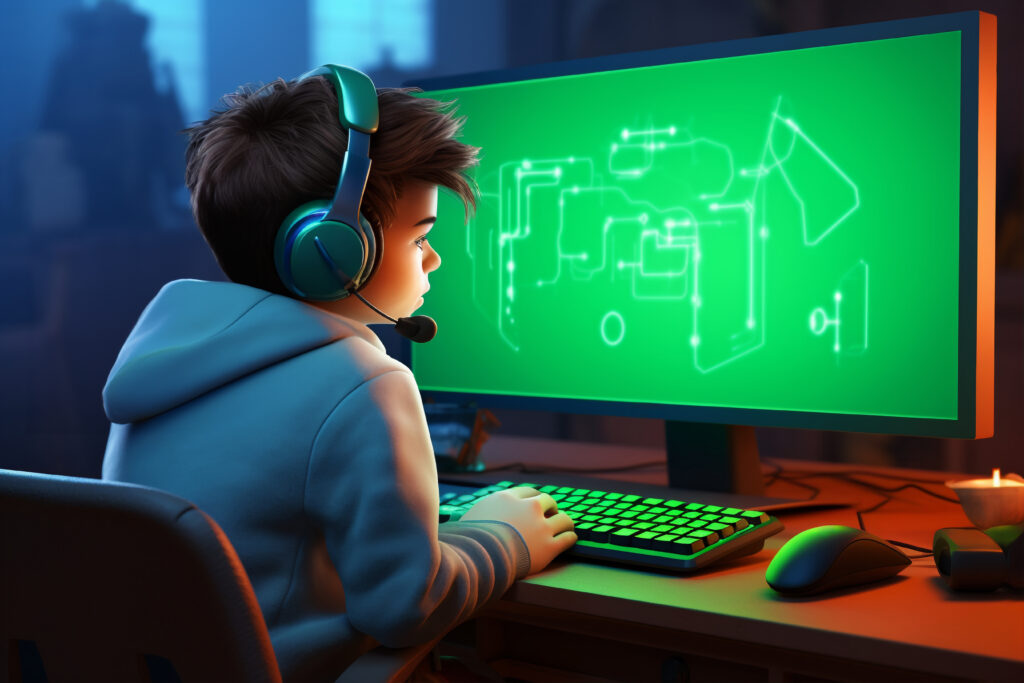I. Introduction to Unity Game Development
A. What is Unity and why it’s popular
Unity is a powerful, cross-platform game engine known for its flexibility, user-friendly interface, and real-time rendering capabilities. It’s widely used in both 2D and 3D game development, supporting platforms like Android, iOS, Windows, PlayStation, and more. One of the main reasons for Unity’s popularity is its vast Asset Store, strong community support, and ability to rapidly prototype and deploy games. Whether you’re creating indie games or large-scale commercial titles, Unity offers a complete toolset to bring your ideas to life. For beginners and professionals alike, mastering Unity game development opens the door to a wide range of creative and technical opportunities in the gaming industry and beyond.
II. Setting Up Unity and Your First Project
A. Installing Unity Hub and Unity Editor
To begin your Unity game development journey, the first step is installing Unity Hub—a management tool that allows you to install different versions of the Unity Editor, manage projects, and access learning resources. From Unity Hub, you can download the latest LTS (Long-Term Support) version of the Unity Editor, which is ideal for stability and long-term updates. Setting this up ensures you’re working with the most reliable version as you learn and build.
B. Creating your first 2D or 3D project using templates
Once Unity is installed, starting your first project is simple. Unity offers built-in templates for both 2D and 3D projects, which are preconfigured with settings suited to the game type you choose. Whether you want to create a top-down puzzle game or a third-person adventure, these templates help you jump straight into the development process. Getting hands-on with project creation is the best way to understand the Unity interface and start applying unity game development principles from day one.
III. Understanding the Unity Interface
A. Scene, Game, Hierarchy, Inspector, and Project panels
The Unity interface is designed to give developers full control over their game environment. The Scene panel lets you place and edit GameObjects in the world, while the Game panel previews how the game looks during runtime. The Hierarchy lists every object in the current scene, and the Inspector allows you to tweak each object’s properties and components. Meanwhile, the Project panel is your asset library, organizing scripts, models, sounds, and more. Mastering these tools is essential for efficient unity game development, especially as your projects grow in complexity.
B. Navigating the Unity workspace efficiently
An organized and efficient workspace can significantly boost your productivity in unity game development. Unity allows you to customize panel layouts, lock inspectors, and use shortcuts to streamline your workflow. Pinning frequently used assets or scripts, learning to toggle between Scene and Game views, and using the search function in the Project panel are simple tricks that save time. With practice, navigating Unity’s workspace becomes second nature, allowing you to focus more on creativity and less on setup.
IV. GameObjects and Components
A. Creating GameObjects
In Unity, GameObjects are the core elements that make up everything in your scene—characters, lights, cameras, UI, and even empty placeholders. You can create a GameObject using built-in 3D shapes (like cubes or spheres), UI elements, or imported assets. These objects serve as containers that gain functionality through attached components. Whether you’re designing a character controller or setting up a menu system, understanding how to create and manage GameObjects is fundamental in unity game development.
B. Understanding Transforms, Prefabs, and Components
Each GameObject in Unity comes with a Transform component, which defines its position, rotation, and scale in the scene. Additional components—like Rigidbody for physics or AudioSource for sound—can be added to give it specific behavior. When you need to reuse an object with the same setup (such as multiple enemies or power-ups), Prefabs let you create templates that can be replicated and updated efficiently. This component-based structure is what makes unity game development modular, scalable, and highly flexible.
V. Scripting with C# in Unity
A. Writing Basic Player Movement and Input Scripts
Scripting in Unity is done using C#, a powerful and beginner-friendly language. One of the first steps in Unity game development is writing a simple movement script for a player character. This involves detecting user input (like arrow keys or WASD) and applying transformations or forces using Unity’s built-in functions such as Update() and FixedUpdate(). With just a few lines of code, you can control direction, speed, and jump actions—laying the groundwork for dynamic gameplay.

B. Communicating Between Scripts and Managing Events
As your project grows, multiple scripts need to communicate and share data. Unity enables this through object references, public variables, and function calls across scripts. You’ll also learn how to use events and delegates to trigger actions like updating a UI element when health changes or playing a sound when an item is collected. This ability to link behaviors across systems makes your codebase modular, efficient, and more scalable—an essential practice in Unity game development.
VI. 2D vs. 3D Game Development
A. Working with Sprites, Physics, and Camera Setups
Unity supports both 2D and 3D development, each with unique tools and workflows. In 2D game development, you’ll work with sprites (flat images) for characters and environments, use 2D physics components like Rigidbody2D and BoxCollider2D, and set up an orthographic camera for side-scrolling or top-down views. This setup is ideal for platformers, puzzle games, or mobile-friendly experiences. A solid Unity game development course will guide you through animation with the Animator, handling collisions, and building smooth, responsive 2D gameplay.
B. 3D Modeling, Navigation, and Environment Design
For 3D games, Unity allows you to create expansive, immersive worlds using 3D models, realistic lighting, and advanced camera systems. You’ll work with tools like the terrain editor, import assets from Blender or Maya, and build navigation systems using NavMesh. A 3D camera setup can be customized for first-person, third-person, or cinematic views. Understanding these features is crucial for genres like action-adventure, simulation, or open-world games—making this an essential part of any Unity game development journey.
VII. User Interface (UI) and Game HUD
A. Creating Menus, Health Bars, and Inventory Systems
A strong user interface is vital for player interaction and engagement. In this stage of your Unity game development journey, you’ll learn to create functional menus, in-game health bars, and dynamic inventory systems. Using Unity’s Canvas system, you can design main menus, pause screens, and interactive HUD elements that guide players through your game. Whether it’s displaying scores or managing items, UI components play a central role in shaping user experience.
B. Using Unity UI Tools and Linking UI to Scripts
Unity provides built-in UI elements like Buttons, Sliders, Images, and TextMeshPro to design clean, responsive interfaces. You’ll connect these elements to gameplay scripts using event listeners and public references—allowing real-time updates, like showing remaining health or item counts. Mastering these techniques is a key part of any Unity game development course, preparing you to create professional-quality interfaces for games on any platform.
VIII. Adding Audio and Visual Effects
A. Integrating Background Music and Sound Effects
Sound is a powerful tool in game design—it sets the tone, enhances immersion, and reinforces player feedback. In this part of your Unity game development journey, you’ll learn how to add background music, ambient sounds, and responsive sound effects using Unity’s AudioSource and AudioClip components. Whether it’s footsteps, explosions, or UI clicks, well-integrated audio brings your game world to life and improves player engagement.
B. Using Unity’s Particle System for VFX
Visual effects add flair and feedback to gameplay. Unity’s built-in Particle System lets you create dynamic effects like fire, smoke, magic bursts, and explosions with customizable properties such as color, size, lifetime, and velocity. You’ll learn how to trigger these effects through scripts or animations to react to player actions or events. These skills are essential in any Unity game development course, giving your game that polished, professional edge.
IX. Publishing Your Game
A. Building for WebGL, Android, PC, and More
Once your game is complete, it’s time to share it with the world. Unity supports cross-platform publishing, allowing you to build your project for WebGL, Android, Windows, iOS, and more with minimal changes. In this stage of your Unity game development journey, you’ll learn how to configure platform-specific settings, handle resolution scaling, and set up input controls based on the target device. This flexibility is one of Unity’s greatest strengths, enabling wide reach and accessibility.
B. Basics of Game Optimization and Bug Fixing
Before releasing your game, performance and stability must be addressed. You’ll explore essential optimization techniques like reducing draw calls, managing asset sizes, and using occlusion culling. Debugging tools such as the Console, Profiler, and custom logging will help you catch and fix issues efficiently. These final touches ensure your game runs smoothly across devices—an important skill emphasized in any good Unity game development course.






